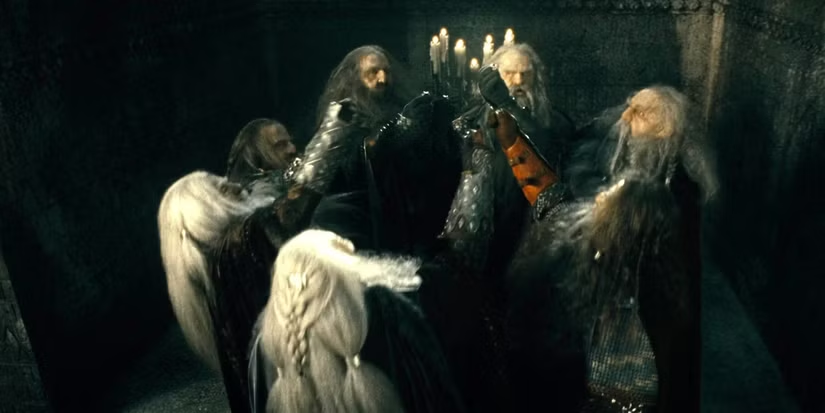
We explore the forgotten history of the seven rings of the dwarves and their dark legacy in Middle-earth

Middle-earth is a vast and enigmatic setting, created by the brilliant mind of JRR Tolkien, intertwined with stories of power and loss, of brave heroes and evil dark lords. Among his many tales, one of the most intriguing elements are the rings of power, distributed among Elves, Men and Dwarves. While the One Ring captures most of the attention The Lord of the Ringsthere are other rings whose fate is equally fascinating but much less known: the Seven Rings of the Dwarves.
The Rings of Dwarf Power
The Seven Rings were awarded to the seven dwarf kings of different clans: Longbeard, Firebeard, Broadbeard, Ironfist, Stiffbeard, Blacklocks, and Stonefeet. Forged in the Second Age of Middle-earth, these rings were scattered across the vast world, rooted in the culture and leadership of each dwarven stronghold. Although these rings have been passed down as family heirlooms, only Durin III of Durin’s Folk, who wore the Ring of Thrór, is mentioned by name.
The rings of Dwarves, unlike the rings of Men, did not transform their wearers into wraiths. Instead, they amplified his greed and anger, helping him amass legendary wealth and treasure. However, this growing greed often brought trouble, as in the case of the dwarves of Khazad-dûm, who, driven by their greed, awakened a balrog in the Mines of Moria with disastrous consequences.
What happened to the seven rings before the Lord of the Rings?
Over time and millennia, the dwarf rings found themselves at the center of conflict and calamity, not by their own volition but due to the circumstances of Middle-earth. By the time Frodo and the Ring party arrived, four of the Seven Rings had already been destroyed, victims of the flames of dragons like Smaug, who, like the dwarves, coveted their treasures.


The remaining three rings had returned to Sauron, recovered during his return and before the start of the War of the Ring. The final fate of these rings is unclear, although it is known that the last known bearer was Thráin II, captured and imprisoned in the dungeons of Dol Guldur, where Sauron claimed the last Ring of the Dwarves, marking the end of his story in the dwarf hands.
The king under the mountain
In the vast history of Middle-earth, Durin III he is a character who embodies the majesty and mystery of the dwarves. His ring, known as the Ring of Thrór, symbolizes not only the sovereignty on Durin’s People but also on resistence against the corrupting influences of Sauron, unlike what happened with the rings of men. This crucial difference highlights how the dwarves, despite induced greed, retained free will, allowing it maintain a certain autonomy over the centuries.
Furthermore, comparing the fate of the Dwarf Rings to that of the Elven Ringsis observed a contrast about how dark powers have affected the different races of Middle Earth. While the elves used their rings preserve and protectthe dwarf rings guided a prosperity which often led to ruin. This nuance adds a rich level of complexity to the Tolkien’s fictiondemonstrating that every choice in his world carried profound weights and consequences.


The trajectory of these rings reflects the broad arc of change in Middle-earth, from its creation to the events told in the trilogy. Although the main story follows the One Ring, the Dwarf Rings saga reminds us that each piece of Tolkien’s legacy has its own story, rich in detail and meaning, waiting to be discovered by those willing to look beyond the main route.